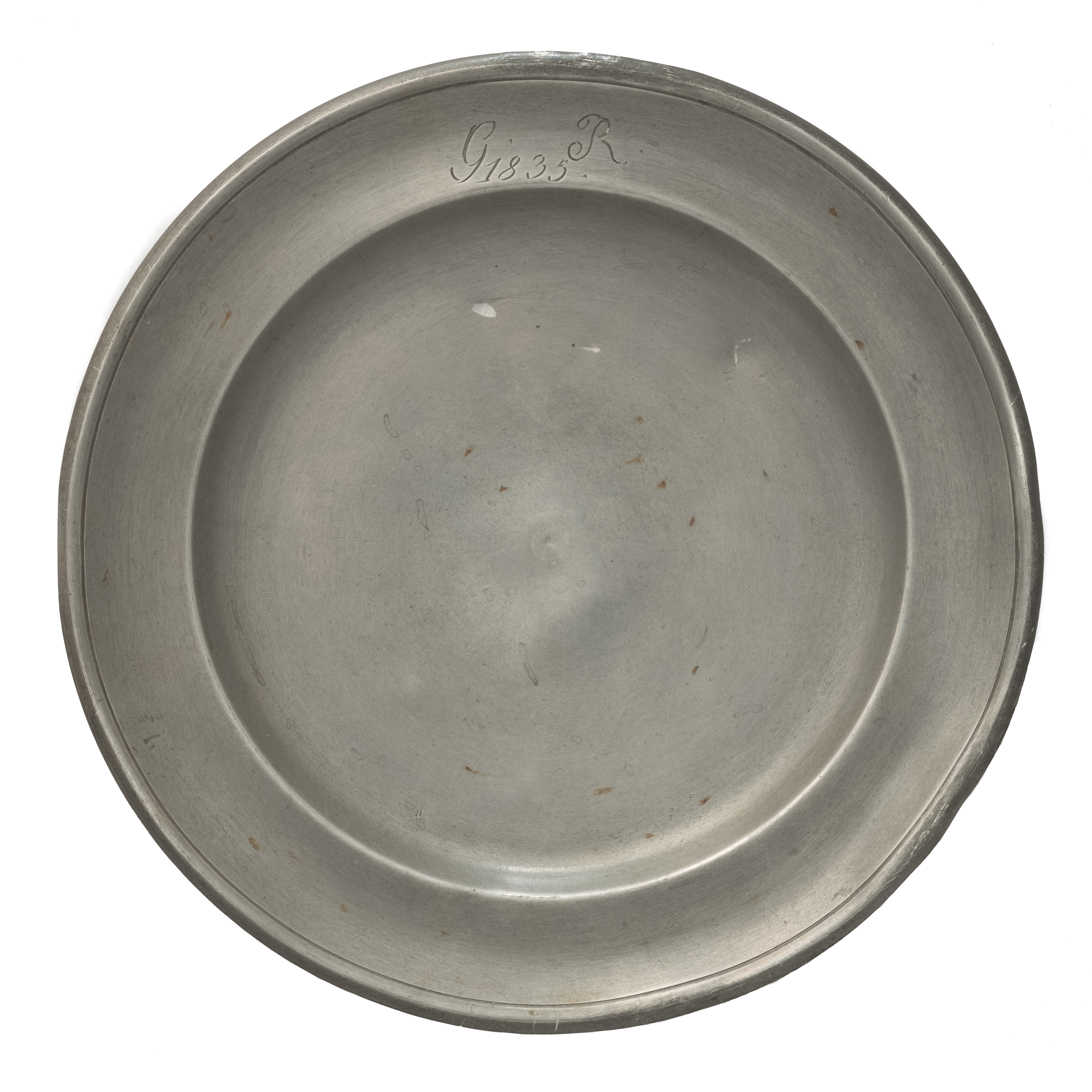This post begins a short series that investigates some family heirlooms in my collection. It’s part of a broader investigation into family history, culture and acculturation. I am particularly interested in how elements of the past influence and inform our present[2].

I have a set of four pewter plates. Notably, they are much smaller than most dinner plates we use today[1]. Made with pewter suggests the working class status of my ancestors[3], and that such plates were able to withstand the rigours of daily use.
This one is dated and has the initials GR, which I presume are those of the plate owner. In 2007 we visited Sonneberg with my father where we met with his cousin, Max. Max gave us a copy of the Hertha family tree which his father had prepared in the 1930s. Tracing back through the tree I found Johan Georg Ritter (1782 – 1841). He was the maternal grandfather of my great-grandfather, Max Hertha.
Given the initials on the plate, I assume he went by his middle name, Georg. He was born in Grub am Forst, Bavaria in 1782, which is about 25km from Sonneberg[5]. He married Christaine Barbara Meusel May 24, 1801. His occupation was Handarbeitter[4]. He died in Sonneberg December 16, 1841.
So, the conjecture aligns with the evidence at hand.
[1]: Smaller plates make smaller portions of food look larger. It has been suggested that today’s larger plates lead to larger portions and thus weight gain.
[2]: Some of the foundations of this work lie in non-representational theory and trans-generational trauma.
[3]: More affluent people would likely have used silver. While they may have had silver plates, which I have not received, Georg Ritter’s position as handarbeitter suggests a working class stature (although my interpretation of his title is set within today’s context; I don’t really know the stature at the time )
[4]: Directly translated handarbeitter is hand worker; we might say skilled worker or craftsman. The term can encompass various occupations and trades, such as carpenters, blacksmiths, tailors, shoemakers, and others who relied on manual labor and craftsmanship. The status of a Handarbeiter in Thuringia during the 1830s would depend on several factors, including the specific trade, economic conditions, and social context. Generally, skilled craftsmen were valued for their expertise and their ability to produce high-quality goods. They played an important role in the local economy and society.
[5]: I point this out because it talks to the range of mobility at that time. Looking through my family tree most of my ancestors were born within a 15 km radius.
Leave a Reply